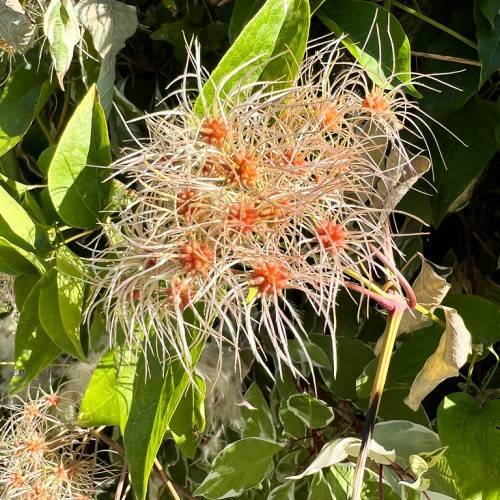
clematis
Clematis 'Golden Cross'
Cycle:
Perennial
Watering:
Average
Hardiness Zone:
4 - 9
Flowers:
Flowers
Sun:
Full sun,part shade
Leaf:
Yes
Growth Rate:
High
Maintenance:
Low
watering
For optimal growth, Clematis 'Golden Cross' should be watered deeply on a regular basis. This means giving the plant 1-2 quarts of water (or enough water to evenly moisten the soil to a depth of 6-8 inches) up to twice a week during the growing season (summer). During the rest of the year, water according to average rainfall and the soil moisture of the area; generally, once every 7-10 days should be enough. Additionally, it's important to water at the plant's root zone to ensure water is absorbed more deeply into the soil. When watering, always consider the specific weather and soil conditions of the area.
sunlight
Clematis 'Golden Cross' should be planted in an area with bright colors of full sun in the morning for 4-5 hours, and partial shade in the afternoon. This plant requires at least 6 hours of direct sunlight each day, split between morning and afternoon sunlight. The protection of afternoon shade helps to prevent the foliage from sunburn. The afternoon shade also helps to delay flower bud maturity, which increases blooming.
pruning
Clematis ‘Golden Cross’ should be pruned in late winter or early spring before new growth starts. A light pruning of the top of the plant will help keep it vigorous and bushy. The bush can be cut back to between 8 and 12 inches from the ground. Remove any old and woody stems completely and then the remainder pruned to remove any dead, dying or damaged stems. The goal is to achieve a good balance between old and new growth and to keep the clematis healthy.
Season
Hardiness Map
FAQ
Can Clematis plants grow in pots?
Yes, Clematis plants can definitely be grown in pots. When planting a Clematis in a pot make sure to use a larger size pot with drainage holes and fill it with a mix of well-draining potting soil and compost. Ensure to keep the root area cool and the pot in a sunny location while providing regular water and fertilization. Check the plant almost daily to make sure it is not becoming too dry. Clematis can do well in a pot and with the right care and conditions, they will thrive.
Are Clematis plants self-pollinating?
No, clematis plants are not self-pollinating. Clematis plants need pollinators such as bees, butterflies, moths and other insects to transfer pollen from the male anthers to the female stigma of the flower in order to produce viable seed. Pollination must also occur within relatively close proximity of the same species in order to create viable hybrid plants.
Can Clematis plants be grown as a houseplant?
Yes, Clematis plants can be grown as a houseplant. It is best to grow them in a pot with full sun and a soil that is rich in organic material and retains moisture. When potting the plant, place a stake or trellis next to the pot so that the vine can climb when it begins to grow. Be sure to water your Clematis plant regularly to keep it healthy and growing. Additionally, keep an eye out for pests and treat with natural insecticides as necessary.
Could Clematis plants survive in a colder climate?
Yes, Clematis plants can survive in colder climates with proper preparation. If planted in the fall, proper mulching should be done to protect the roots from cold temperatures. If planted in the spring, they should be watered frequently to help them adjust to the cooler temperatures more quickly. If temperatures drop below -20°C ( -4°F), additional measures may need to be taken such as the application of protective wraps and thermal insulation. Additionally, plants in exposed areas should be protected from the wind to prevent excessive dehydration. With the right measures in place, Clematis plants can easily survive in colder climates.
Could Clematis plants be grown in a greenhouse?
Yes, clematis plants can be grown in a greenhouse. Due to their vine-like growth habit and tropical native origins, clematis plants thrive in the moist and warm environment of a greenhouse. Clematis are generally grown from cuttings or from dividing existing plants, and benefit from regular pruning and fertilizing. They will also enjoy the indirect light of a greenhouse and the protection from strong winds and temperatures that the humidity and contained environment provides.
